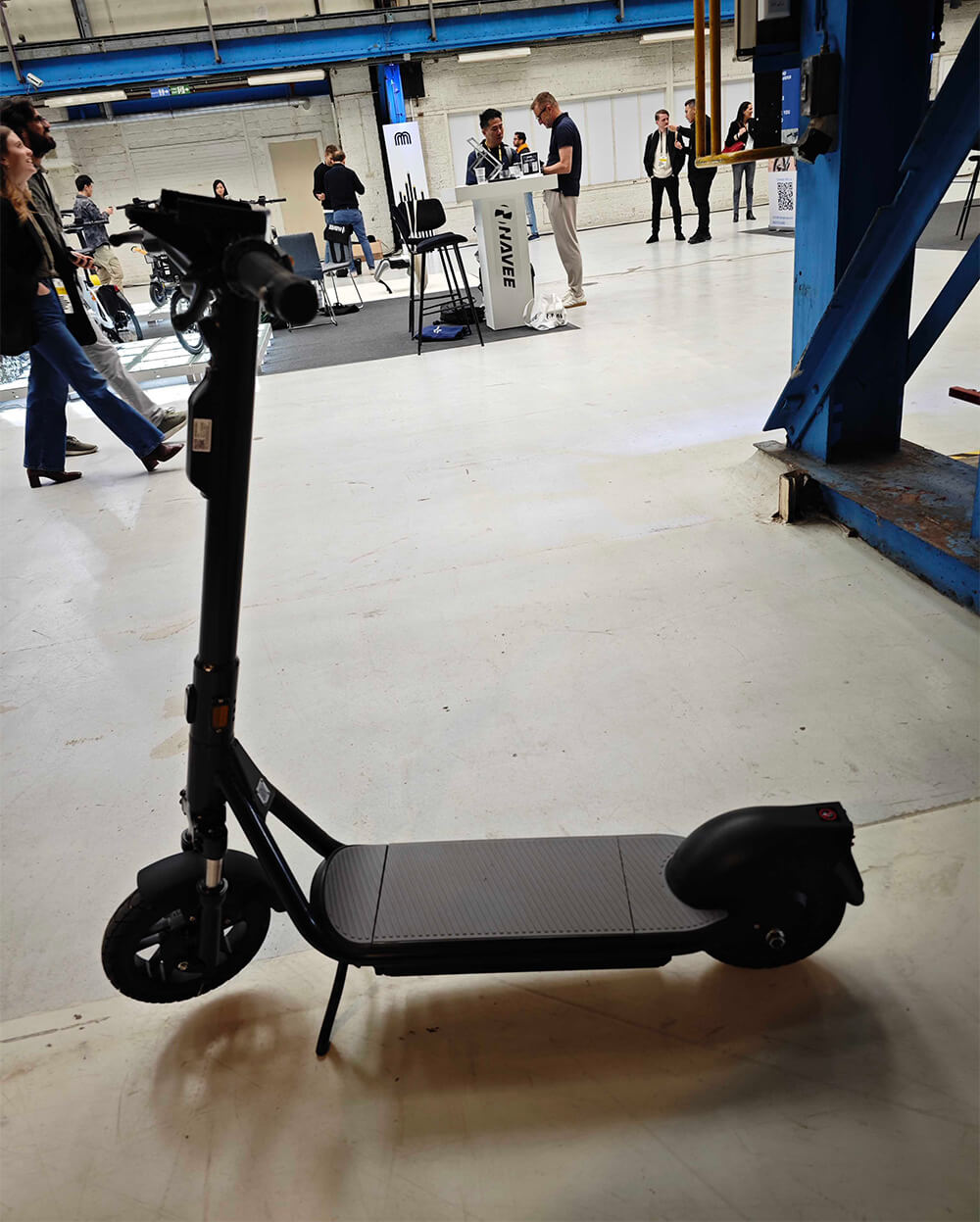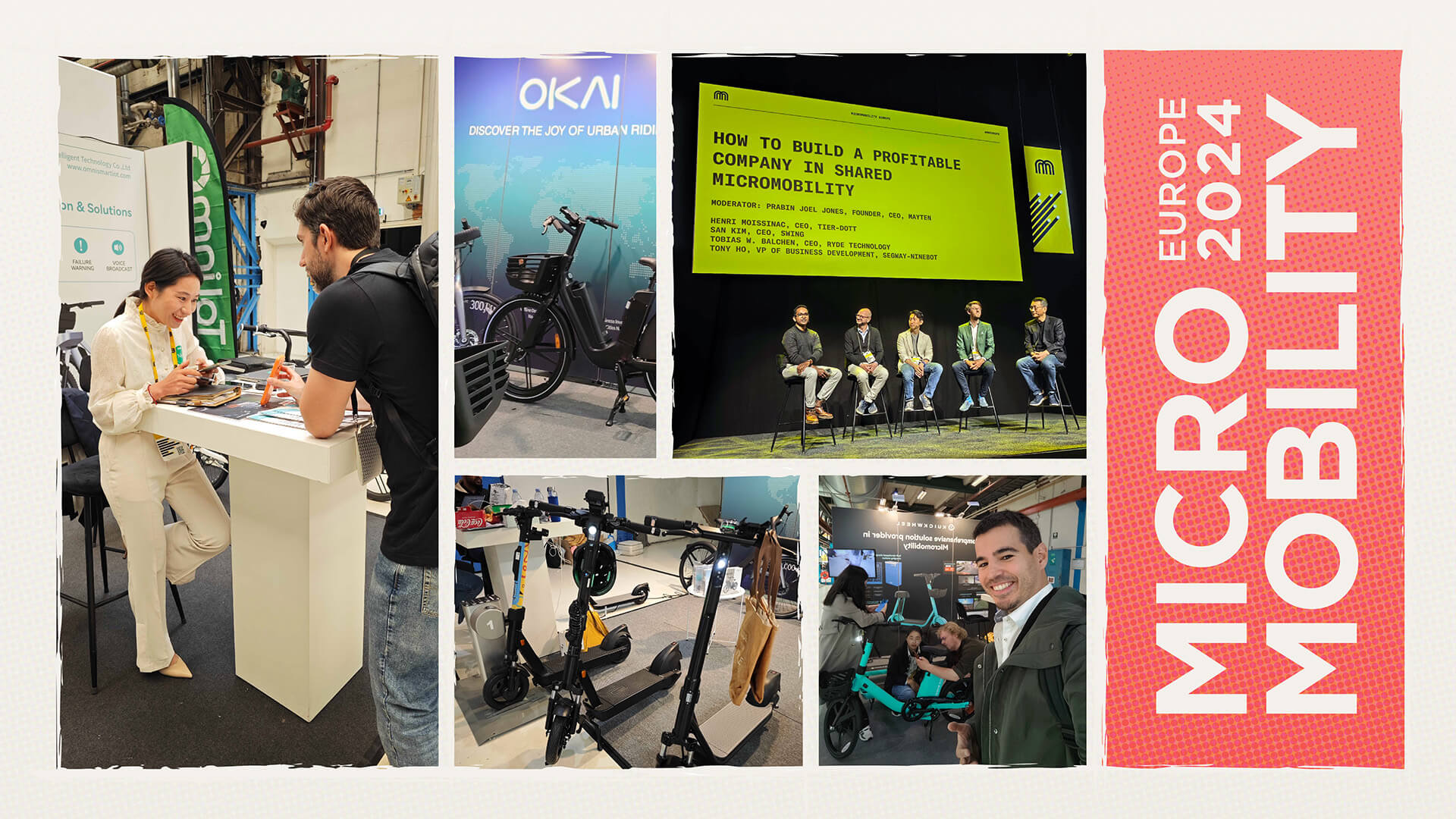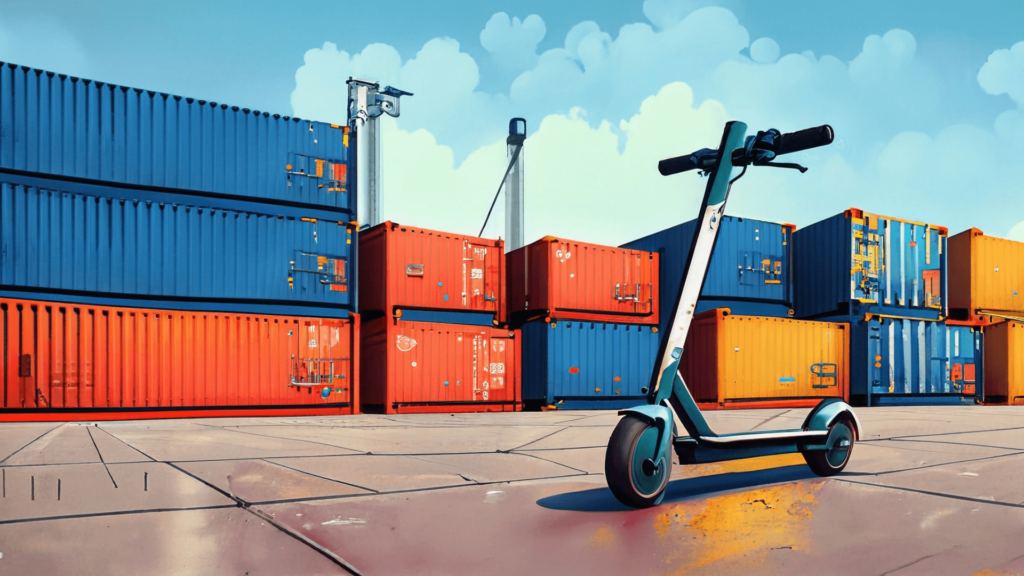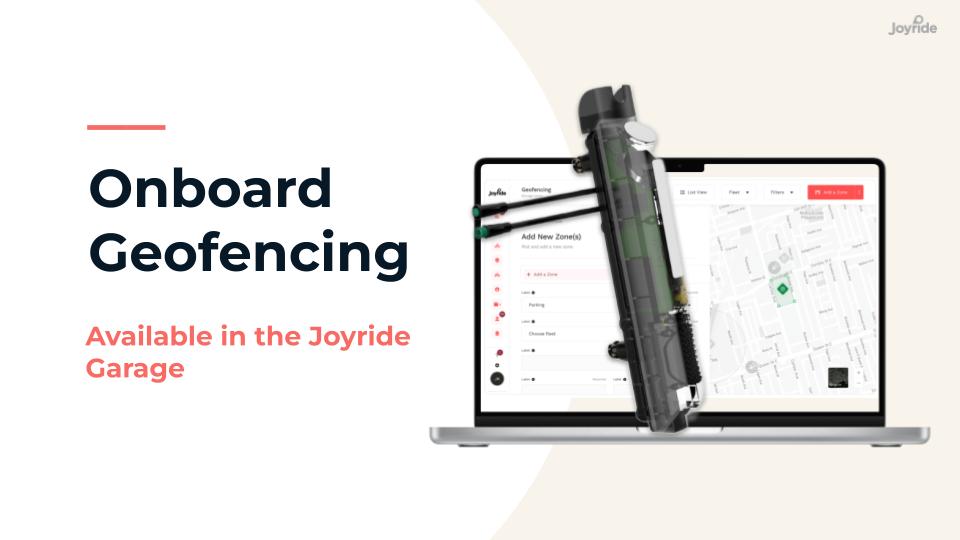At the Micromobility Europe 2024 exhibition, a transformed industry showed itself. This year's event wasn't just about flashy booths and bullish presentations. On the contrary, as the dust settles from the past year of consolidation, we found ourselves face-to-face with a matured micromobility landscape.
Couldn’t attend the event in Amsterdam? Buckle up as we delve into the five essential market trends we observed during our visit to Micromobility Eruope 2024.
Shared micromobility market consolidation has advanced
The shared micromobility market has experienced a strong consolidation period over the last two years. Some were quick to declare that "scooter sharing is dead," but growing numbers from the industry show that this is a misunderstanding of the situation.
Companies are increasingly focusing on cost control, opting for efficiency over extravagance, such as forgoing expensive fair booths. This shift towards frugality has resulted in fewer companies and visitors at these events, a reflection of the industry's maturation rather than its demise. To a certain extent, that’s good news.
One of the most popular panels at this year’s MME was “What Is Shared Micromobility’s Pathway to Profitability?”, moderated by Prabin Joel Jones. He began by asking whether anyone still remembers the famous panel from 2019 where execs from some of the largest scooter sharing companies at that moment participated: Circ, Wind, Tier, Grow, Spin and Voi.
At that time, many of these companies struggled to distinguish themselves from their competitors, and instead for example argued who was the first one to use orange colour branding (don’t believe us? watch the recording to see how much the industry has changed).
At this year’s panel, it was Dott, Swing, Ryde and Segway leading the discussion.
Take this as proof that the offer side of the market has adapted to its high-volume, low-margin character, which needs fewer but larger players that operate more efficiently than previously. This trend is evident in the strategies of the companies present, all of whom emphasized their early focus on cost-saving–but through different efficiencies.
Swing has the luck of vandalism being mostly non-existent in Korea, and leaves most of the R&D to its suppliers. Dott, on the other hand, used R&D to improve its customer experience, and Ryde focused on operational efficiency.

Market consolidation changed available vehicle models
The fleet operator’s need for cost-control extends to the new vehicle models entering the market. Manufacturers are prioritizing cost-effective performance over their initial research and development for durability and AI. The latest scooters feature steel frames instead of aluminium-alloy to save costs in the production.
As footboards have grown wider for additional rider comfort and fitting larger batteries, it has become less material-intensive to hang the scooter’s electronics onto a frame instead of pouring a single large aluminium alloy body.
For example, OKAI debuted a steel-frame scooter that it will sell soon for less than $600 USD, FOB from China. This scooter will be available in the Joyride Garage soon, visit their shop and click on “follow” to make sure you’re the first one to find out!

E-bike designs have changed to save costs as well. The newest models have smaller tires, lighter frames, and bear a design resemblance to those in scaled-up Asian markets, such as DiDi’s sharing e-bikes in China. In this way, the manufacturers can tap in the low prices of large scale-produced e-bike parts that people in Asia are using in the hundreds of thousands.
Segway’s B200 Sharing E-Bike is an adoption of that model for western users, in which it enlarged the frame for larger riders. If you’re a reader from Asia, you can buy OKAI’s EB300 Sharing E-Bike here!

Left: OKAI's EB300 Sharing E-Bikes for Asian markets. Testing the resonance for Asian form factors in Europe.
Right: the author observing a European customer who is interested in Kuickwheel's Asian-model sharing e-bike.
As ADAS matures, the competition between OEMs heats up
The presence of four large Chinese manufacturers--Segway, OKAI, Navee, and Kuickwheel--exhibiting similar models side by side, attests to the emerging competitiveness of the market. In the recent past, when the focus of fleet managers was market acquisition by applying with high-tech scooters for city tenders, Segway gained a technological edge on its competition with its superior AI-cameras and ADAS (Advanced Driver Assistance Systems). At MM Europe this year, many companies exhibited competitive ADAS-products for scooter sharing, among them Omni, Luna, Navee and Okai.
Not to go unnoticed, all of the guests in Prabin Joel Jones’ panel (mentioned above) are Segway’s current customers. Segway started its efforts on AI scooters early in 2019 with a self-driving scooter, the T60 Roboscooter. That then evolved into a lighter, rider-assistance-focused version, the T60 Lite, which matured into the Max S90L e-scooter.
The evolution of Segway’s scooters from autonomous ones to a perfected rider-assistance is metaphorical of the micromobility industry’s evolution overall. Many companies launched with lofty visions, such as Tortoise’s autonomous driving e-scooters, then later pivoted to more realistic pursuits, where they focused on increasing the riding safety and parking management of e-scooters.
The takeaway? Segway’s competition has caught up, is working on similarly low-priced steel frame versions, and is now luring customers with attractive alternatives. Are you searching for one? Visit Navee Europe’s (only for EU visitors) and OKAI’s stores on the Joyride Garage! Our supplier list shows you a growing number of alternative OEMs.
Consumer e-bike market is slowly recovering
The consumer e-bike market finally shows signs of recovery. Companies still have excess inventory due to the slow sales in 2023, where e-bike sales dropped harshly. The slowdown came after a boom in e-bike sales in the first years of the pandemic in 2020 and 2021, when consumers bought e-bikes as an alternative to taking crowded public transport where risk of infection would be higher.
While the demand surged during the pandemic, the supply chains from East Asia were severely interrupted by Covid lockdowns. After the lockdowns, e-bike companies ordered massive amounts from their suppliers to serve the previous excess demand, only to figure that the demand had drastically reduced after the economic shocks caused by Russia’s invasion of Ukraine.
Nevertheless, as mentioned by a representative of Riese & Müller in the panel “After the boom: A Deep Dive Into the Business of Selling Electric Bikes in 2024”, their sales started growing slowly again this year and they’re expecting that the excess inventory will be sold by next year, latest early 2026. Riese & Müller’s assessment is in line with the latest industry news, EU E-Bike imports have stabilized, as did the drop in Taiwan’s e-bike exports.
The future of connected e-bikes: ride now, pay later
As Sam Ebert, Product Manager of Cannondale, mentioned during the profitability panel, the trend that “every e-bikes needs to come with a phone on the handlebar” is continuing. What does he mean by that? As urban environments adapt to changing commuting dynamics, e-bikes are swiftly evolving into smart, connected and multifunctional devices. While many models currently have bike computers on the handlebar, consumers are increasingly expecting e-bikes to have phone connectivity and want to mount their phones on the handlebar.
All panellists, including Ferry Zonder for the urban lifestyle e-bike brand Veloretti, agreed that Buy Now Pay Later (BNPL) sales models are playing an increasing role and could account for 30-40% of e-bike sales in the near future in countries such as Germany or the Netherlands. Subscription plans, leasing, and payment instalments with BNPL payment partners like Klarna are all on the rise.
Connected e-bikes come hand-in-hand with Ride Now, Pay Later options that users can manage via the same app that connects with their e-bike. But it’s not only consumers who can gain from the convenience of phone-connected e-bikes. E-bike companies can leverage phone connectivity to monitor the e-bikes remotely, provide maintenance, and gather data for predictive analytics.
Joyride’s OEM solution offers exactly that opportunity. If you’re an e-bike manufacturer, follow that trend and contact us to find out how you can stay up to date in an evolving market.





